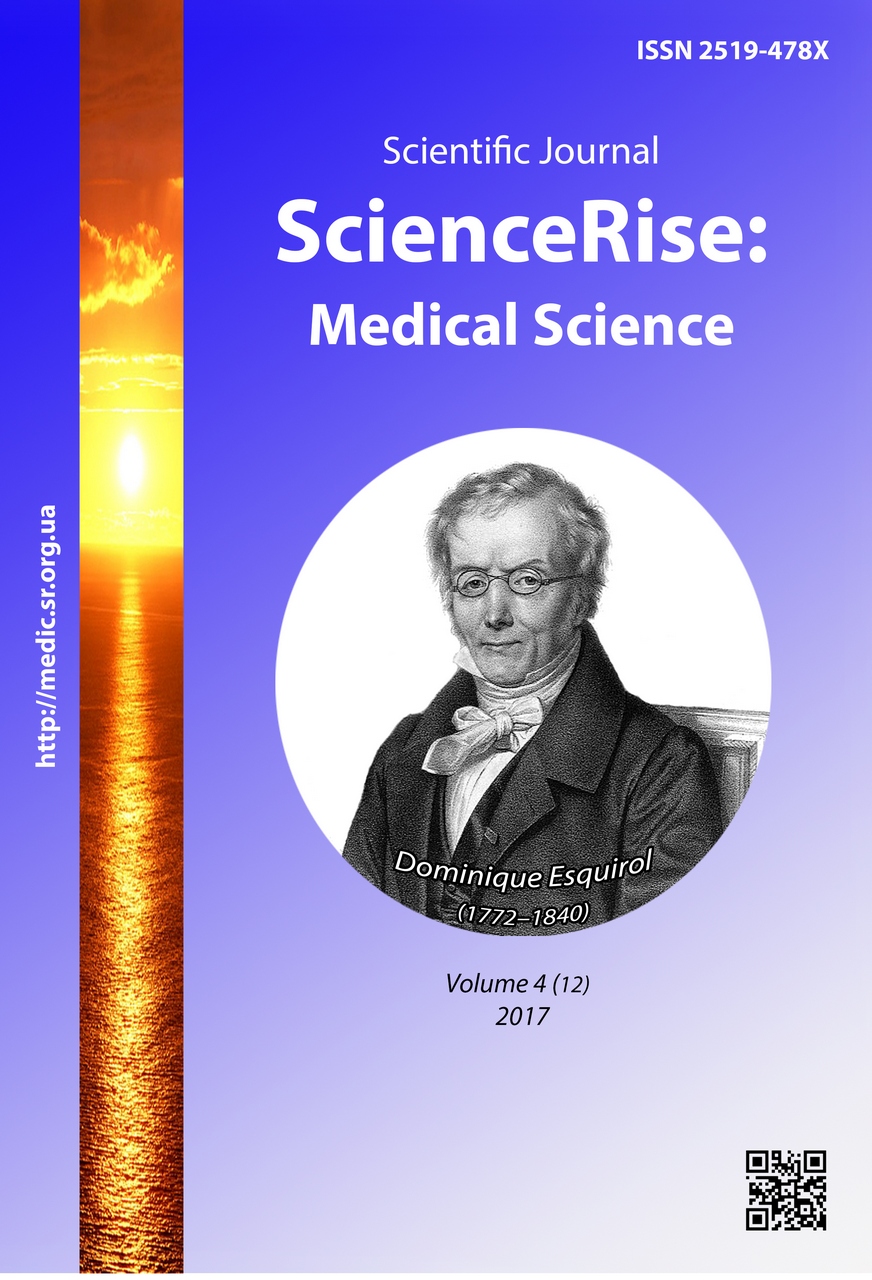Вплив на післяопераційний період ранньої мультимодальної реабілітації при абдомінальній гістеректомії
DOI:
https://doi.org/10.15587/2519-4798.2017.99291Ключові слова:
мультимодальна стратегія, лапаротомія, гістеректомія, знеболення, епідуральна аналгезія, севофлюран, перистальтика, активізаціяАнотація
У дослідженні взяли участь 41 хвора, які були розділені на дві групи. В основній групі (19 хворих) застосовували протокол ранньої мультимодальної реабілітації. У контрольній групі (22 хворі) використовували традиційний периопераційний режим. Запропонований комплекс заходів є одним із шляхів реалізації концепції fast track хірургії при гінекологічних операціях. Подібний підхід дозволяє домогтися ранньої виписки, що несе в собі, без сумніву, прямий економічний ефект і значно збільшує престиж лікаря та медичної установи
Посилання
- Wodlin, N. B., Nilsson, L. (2012). The development of fast-track principles in gynecological surgery. Acta Obstetricia et Gynecologica Scandinavica, 92 (1), 17–27. doi: 10.1111/j.1600-0412.2012.01525.x
- Wright, J. D., Herzog, T. J., Tsui, J., Ananth, C. V., Lewin, S. N., Lu, Y.-S. et. al. (2013). Nationwide Trends in the Performance of Inpatient Hysterectomy in the United States. Obstetrics & Gynecology, 122 (2), 233–241. doi: 10.1097/aog.0b013e318299a6cf
- Nelson, G., Altman, A. D., Nick, A., Meyer, L. A., Ramirez, P. T., Achtari, C. et. al. (2016). Guidelines for pre- and intra-operative care in gynecologic/oncology surgery: Enhanced Recovery After Surgery (ERAS®) Society recommendations – Part I. Gynecologic Oncology, 140 (2), 313–322. doi: 10.1016/j.ygyno.2015.11.015
- Nelson, G., Altman, A. D., Nick, A., Meyer, L. A., Ramirez, P. T., Achtari, C. et. al. (2016). Guidelines for postoperative care in gynecologic/oncology surgery: Enhanced Recovery After Surgery (ERAS®) Society recommendations – Part II. Gynecologic Oncology, 140 (2), 323–332. doi: 10.1016/j.ygyno.2015.12.019
- Dickson, E., Argenta, P. A., Reichert, J. A. (2012). Results of Introducing a Rapid Recovery Program for Total Abdominal Hysterectomy. Gynecologic and Obstetric Investigation, 73 (1), 21–25. doi: 10.1159/000328713
- White, P. F., Kehlet, H., Neal, J. M., Schricker, T., Carr, D. B., Carli, F. (2007). The Role of the Anesthesiologist in Fast-Track Surgery: From Multimodal Analgesia to Perioperative Medical Care. Anesthesia & Analgesia, 104 (6), 1380–1396. doi: 10.1213/01.ane.0000263034.96885.e1
- Hadzic, A. (2005). Is regional anesthesia really better than general anesthesia? Anesthesia & Analgesia, 101, 1631–1633. doi: 10.1213/01.ane.0000184292.54807.f3
- Аntipin, E. E., Uvarov, D. N., Аntipina, N. P., Nedashkovskiy, E. V., Sovershaeva, S. L. (2013). Rannja multimodalnaya reabilitatsiya pri аbdominalnoi gisterektomii – vliyanie na posleoperatsionniy period. Аnestesiologia i reanimatologia, 6, 37–41.
- Gorlero, F., Lijoi, D., Biamonti, M., Lorenzi, P., Pulle, A., Dellacasa, I., Ragni, N. (2008). Hysterectomy and women satisfaction: total versus subtotal technique. Archives of Gynecology and Obstetrics, 278 (5), 405–410. doi: 10.1007/s00404-008-0615-6
- Kluivers, K. B., Johnson, N. P., Chien, P., Vierhout, M. E., Bongers, M., Mol, B. W. J. (2008). Comparison of laparoscopic and abdominal hysterectomy in terms of quality of life: A systematic review. European Journal of Obstetrics & Gynecology and Reproductive Biology, 136 (1), 3–8. doi: 10.1016/j.ejogrb.2007.06.004
##submission.downloads##
Опубліковано
Як цитувати
Номер
Розділ
Ліцензія
Авторське право (c) 2017 Olga Lashkul

Ця робота ліцензується відповідно до Creative Commons Attribution 4.0 International License.
Наше видання використовує положення про авторські права Creative Commons CC BY для журналів відкритого доступу.
Автори, які публікуються у цьому журналі, погоджуються з наступними умовами:
1. Автори залишають за собою право на авторство своєї роботи та передають журналу право першої публікації цієї роботи на умовах ліцензії Creative Commons CC BY, котра дозволяє іншим особам вільно розповсюджувати опубліковану роботу з обов'язковим посиланням на авторів оригінальної роботи та першу публікацію роботи у цьому журналі.
2. Автори мають право укладати самостійні додаткові угоди щодо неексклюзивного розповсюдження роботи у тому вигляді, в якому вона була опублікована цим журналом (наприклад, розміщувати роботу в електронному сховищі установи або публікувати у складі монографії), за умови збереження посилання на першу публікацію роботи у цьому журналі.










